The Institute of Public Affairs (IPA) published a report in June titled “Mass Immigration Induced Housing Shortage”, which predicted that Australia would face a net housing shortage of 252,800 dwellings by 2028, due to a projected 1.755 million new net overseas migrants by the financial year ending 2028:
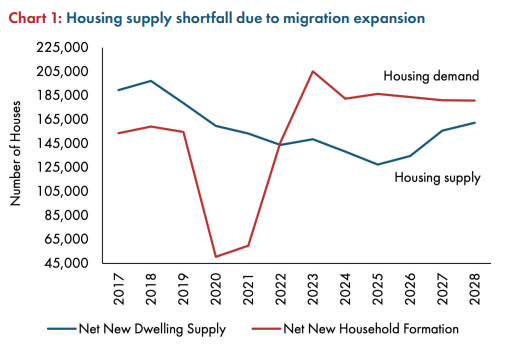
Source: Institute of Public Affairs
According to the IPA, this immigration inundation amounts to 117,000 additional households formed solely from immigration in pursuit of housing each year.
The IPA published another report last month, titled “Australia’s Housing Shortage”, which examines the impact of international students on the Australian housing market.
The study includes the chart below, which shows that Australia’s net student intake reached an all-time high of 253,940 in the financial year 2022-23:

Between the financial years ending 2025 and 2028, the net annual intake of international students is expected to stabilise to pre-pandemic levels”.
This means that “between the financial years ending 2023 and 2028, we expect 771,012 net new international students to settle in Australia, which will be the equivalent of 308,405 households”:

The next table shows the impact of the international student influx on Australia’s housing supply:
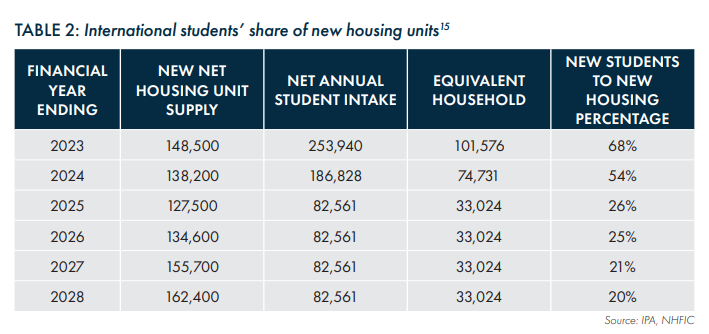
“Housing supply has declined, and is expected to continue to decline, from a high of almost 200,000 units annually, prior to the pandemic, to a low of 127,500 in 2025 before picking up again in a belated response to increased demand”, IPA notes.
The impact will be most severe in Australia’s largest capital cities:
“The overwhelming majority of international students (approximately 93%) settle in Australia’s capital cities. According to ABS data, 77% of international student enrolments in the calendar year 2022 occurred in Sydney, Melbourne, and Brisbane”:

IPA projected that 48% of Australia’s new housing supply in Australia’s capital cities will be swallowed by international students:
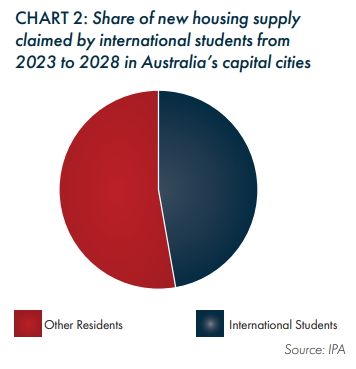
Sydney will be hit hardest by the student deluge:
“Approximately 79% of Sydney’s new housing supply will be claimed by international students over the years to 2028… This means that international students are drawing down on the existing stock of dwellings in Sydney, increasing rental prices for Australians and other migrants”:
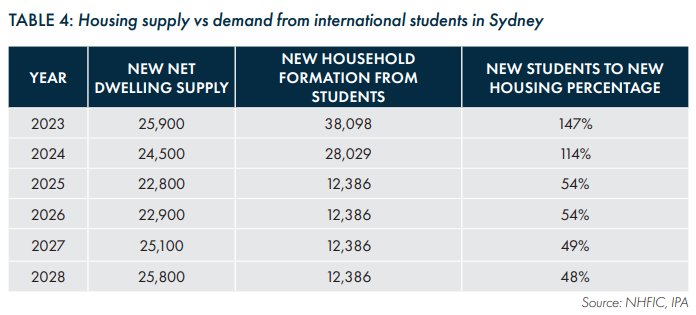
Sky News host, Cory Bernardi, quoted the above IPA research on Monday, claiming that international students are taking up the equivalent to all “new housing supply” in some capital cities:
“Remember the government’s own words are that we are in a housing crisis both in terms of affordability and availability”.
“They’re making the problem worse and almost two-thirds of this year’s and next year’s migrant intake – that’s around 600 000 people in total – are international students”.
“The IPA The Institute of public affairs found in Australia’s capital cities, where most International students reside, the percentage of international students to new housing supply was as follows in the financial year”:
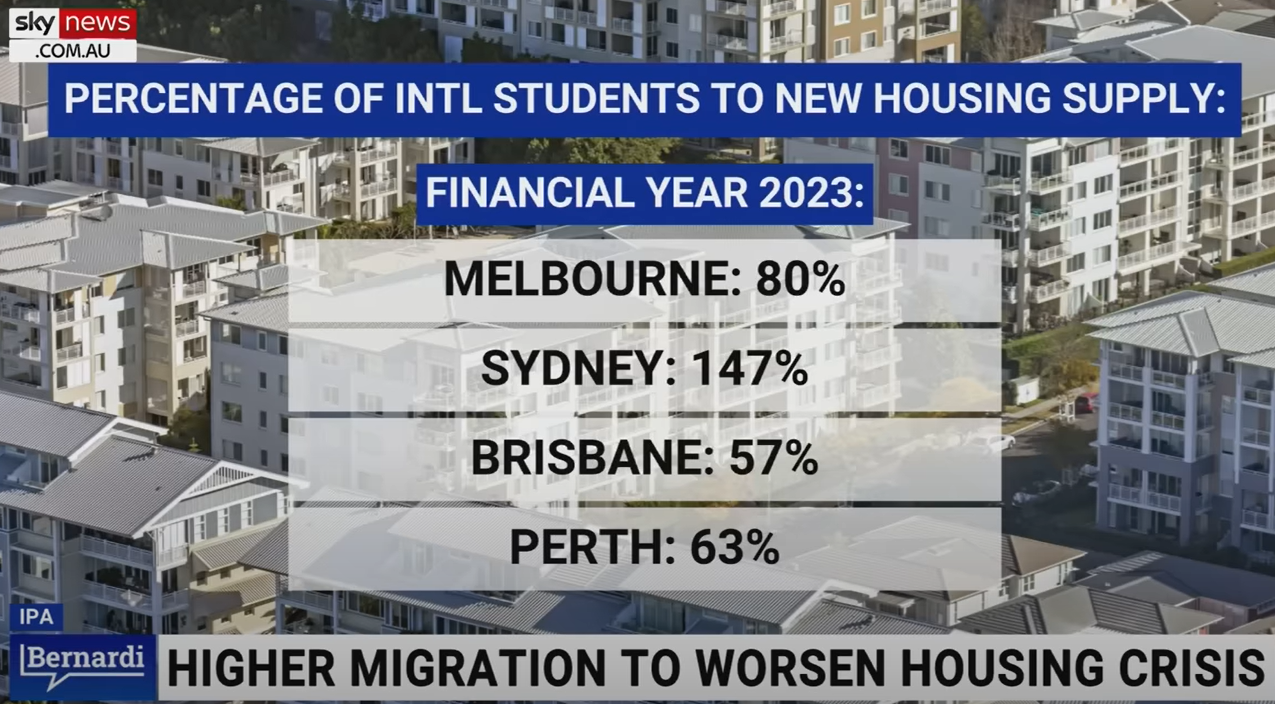
“Greater than a hundred percent indicates international students occupied an equivalent to all the new housing supply available, as well as consuming some of the existing supply”.
“Let me make this even clearer for you: the international students that governments are bringing in are taking out more than all the new housing supply in cities like Sydney, Hobart and Darwin”.
“They’re taking over more than half of all new housing in every other capital city”.
“Do you really have to wonder why rents are going up and why they are cues of people for every single vacancy?”
“You know government seems to be putting their tax-free profits and the back door ticket to permanent residency they provide ahead of Aussies being able to put a roof over their heads. This is an abject disgrace”.
The federal government has engineered the housing shortage with its excessive immigration program.
The former Morrison Government uncapped international student working hours, resulting in an increase in the number of migrants attempting to use the student visa system as a backdoor work visa.
After that, the Albanese Government expanded post-study work rights, thereby converting a student visa into a long-term residence and work visa.
The Albanese Government has also created new immigration pathways, particularly for Indian students.
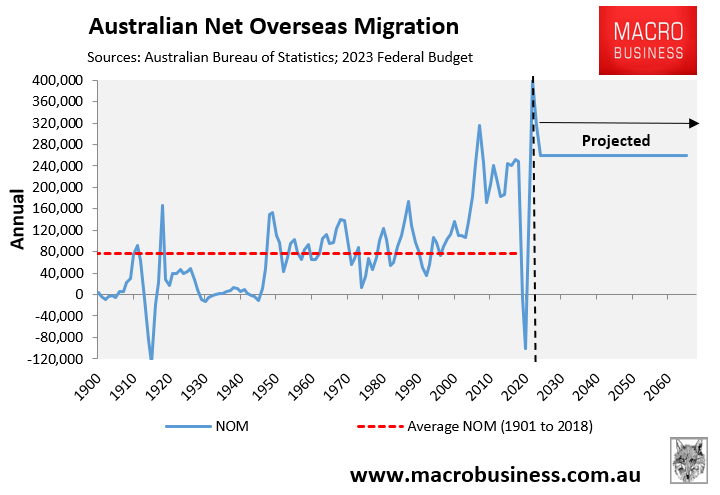
Australia’s housing shortage could be solved with the stroke of a pen by simply reducing net overseas migration to long-term historical levels of around 100,000 per year.

